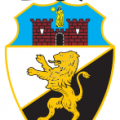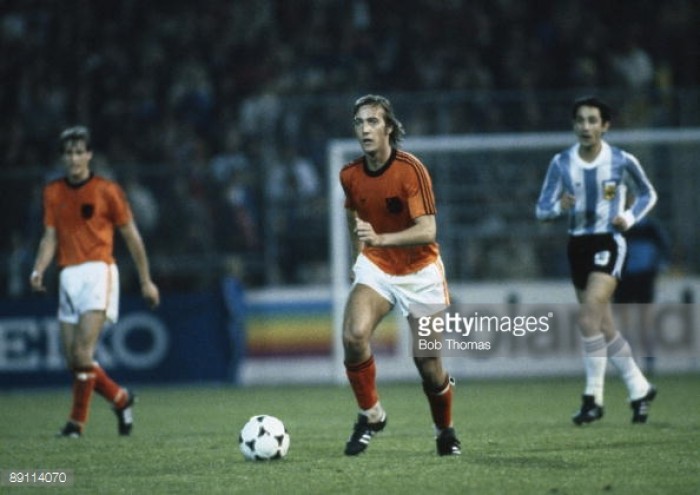It’s rare to witness players taking pride in being the second best player in the world, isn’t it? Ask any of the current top three or four players in the world, they would hardly be happy with not being the best player of the best, no matter how good they are. It’s obvious that they would want to be number one, that they would hate being overshadowed by anyone.
When, following a move to Barcelona in 1974, Johan Neeskens was asked about how he felt when being called ‘Johan Segon’ by local fans and being overshadowed by the presence of Johan Cruyff, the wavy-haired midfielder coolly replied: “I don’t mind being the second greatest player in the world”
For many, the reply may well seem a sign of gilded modesty. And while this certainly was the case, it was also a clear indication of how colossal a team player this man was.
Never to stop for a single second on the pitch, Neeskens embodied everything that Rinus Michels’ Total Football needed to give the impression of being a well-oiled machine. When Cruyff stood for the glorious turns and outrageous pieces of footballing magic, Neeskens’ ruthless pressing completed the jigsaw.
Big game temperament? He certainly had it
Not an Ajax youth product despite belonging to an era that saw the rise of the Amsterdammers, Neeskens was signed by Michels in 1970 from local club Heemstede two years after he had become a regular for the side from the north of the country.
He was signed as a right-back, a position where he was the most impressive at, but his engine and workrate made different managers use him as a central midfielder and often as a forward who would press the life out of the opposition.
It wasn’t just Neeskens’ seamlessly elegant hairstyle that oozed composure, but the manner in which he approached games was all the more suggestive of the same thing.
And when Brazil and the Netherlands went head to head in the 1974 World Cup semi-final, with a spot in the final of the footballing extravaganza beckoning against West Germany, composure was something either of the sides would have loved to make do with.
As the clock ticked on at the Westfalenstadion, the tensions mounted. Minutes into the second half, as the Oranje caught Brazil on the break, Cruyff danced into a wide area after having been picked out by Neeskens with a finely threaded pass.
As the second Johan marauded forward into the box, it seemed as if the first Johan had misplaced a pass straight into the Brazilian defender’s way. It would have required some effort from Neeskens to reach out for it and come close to threatening the goalkeeper.
But daunting tasks never deterred Neeskens. He reached out for Cruyff’s pass with unmatched determination and if merely scoring wasn’t enough, he lobbed it over the helpless goalkeeper.
The Brazilians stared in dismay at what just transpired; a perfect combination of the sense of calm and the never say die attitude that Neeskens always had. Rinus Michels’ men won the game 2-0, as Cruyff himself doubled the lead fifteen minutes later, setting up a date with West Germany in the final at the Olympiastadion in Munich.
“When I walk onto the field, I always want to win and get the ball – I am not concerned about myself.”
It was after his move to the Nou Camp in 1974 that Neeskens got more international attention than ever. Not like he loved the spotlight, but the female population found him to be a heartthrob, with his rock star looks going a long way in doing just that.
More than that though, it was the football lovers who saw in him a proper warrior, who would never show any signs of giving up. His former Ajax and national side teammate Sjaak Swart once famously said: "He was worth two men in midfield,” typifying his urge to give his all every time he stepped out onto the pitch.
With little regard for his own safety when unleashing his unerring passion for the game, Neeskens could do anything that the team wanted him to do.
It was Michels himself who realised how important Neeskens was, not just for his Total Football system’s functioning, but also to the proper functioning of Cruyff himself. Neeskens’ combative style allowed Cruyff the freedom and room to weave his magic, as Johan Segon played around him or just behind him.
His unselfish attitude and ruthless aggression made the Catalonians fall in love with him very early. They saw a bit of themselves in him- someone who loves the game and hates losing. All that despite Barcelona winning only two titles throughout Neeskens’ stay in Spain.
He went on to play the next two World Cups and became the fulcrum of the side after Cruyff retired from international football in 1977. The 1978 World Cup in Argentina once again saw the Oranje reach the final of the competition, but they forever engraved their names in the history books for being one of the best sides to not win a World Cup.
What goes up, must come down
Neeskens’ story isn’t just of highs that made him a much-loved cult figure of the game, as his time in the United States saw him fight continuous battles with gambling, addiction and cocaine. It was his in-your-face and fearless nature that brought about his downfall from Barcelona, as the legend points out.
In a rather infamous incident during the fag end of his stint at Barcelona, the then Catalan president Jose Luis Nunez walked into the toilet, only to notice that there was no toilet paper in there. Neeskens, who was in the toilet next door, was asked to pass on a roll of toilet paper.
It is unknown whether it was because of anger or jokingly, Neeskens didn’t pass on the toilet paper. His sale followed in the next transfer window.
And that was when the downfall began. The ravaging battles with addiction kept him troubled and he stayed at New York Cosmos for five seasons, leaving as a free agent in 1984. A short adventure with Dutch outfit Groningen followed, but Neeskens signed up with the South Florida Sun in 1985.
Neeskens left in limbo
Six matches into the new season though, the United Soccer League collapsed, with Neeskens forced to join the Kansas City Comets of the Major Indoor Soccer League in 1989. He, at this time, obviously wasn’t as good as he ever was and after a season there, Neeskens played at two Swiss clubs in FC Baar and FC Zug.
While it can be said that Neeskens could have enjoyed more years at the very top of his game, but he has himself to blame for not holding onto that level. He may not have been as renowned as the first Johan, but we would have known more than we know him today.
-
This article is part of a regular feature series, 'The A-Z of forgotten football heroes'. Check out last week's entry, on a considerably less gilded cult hero, here.










































